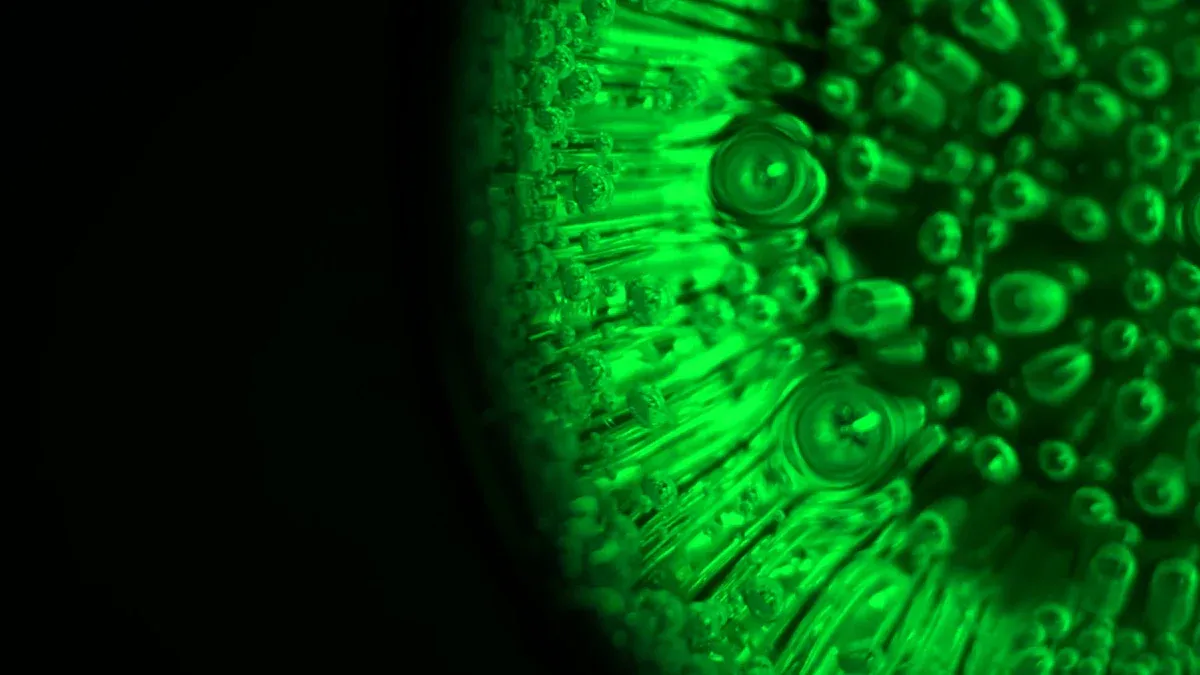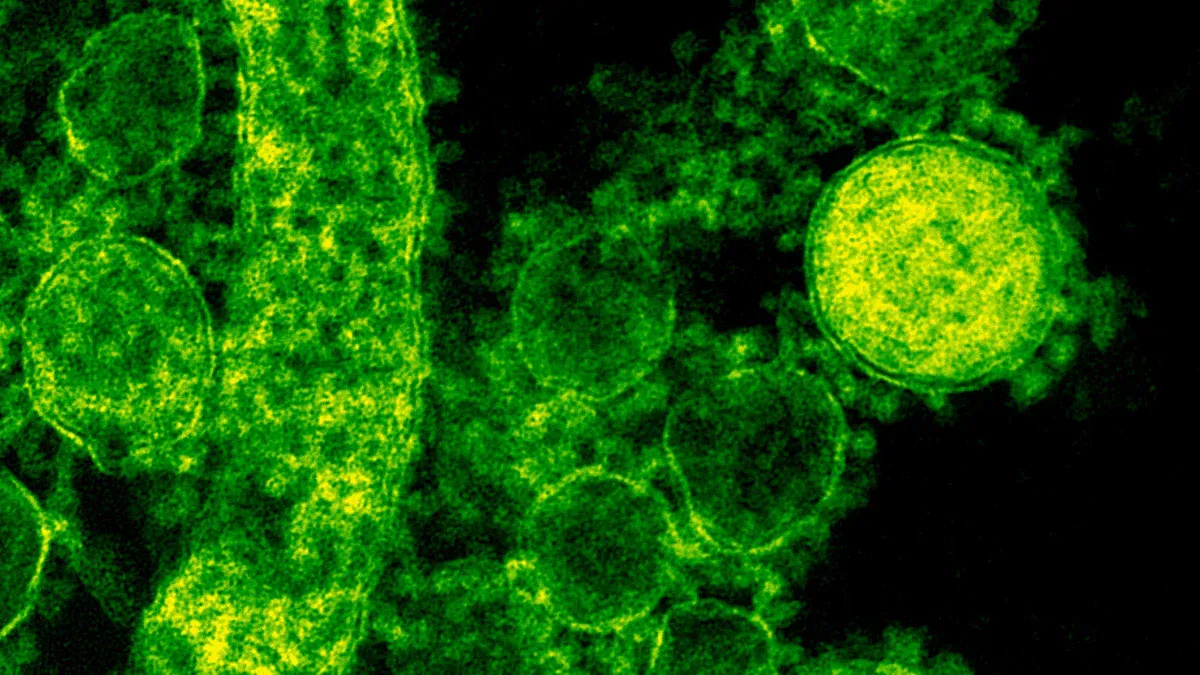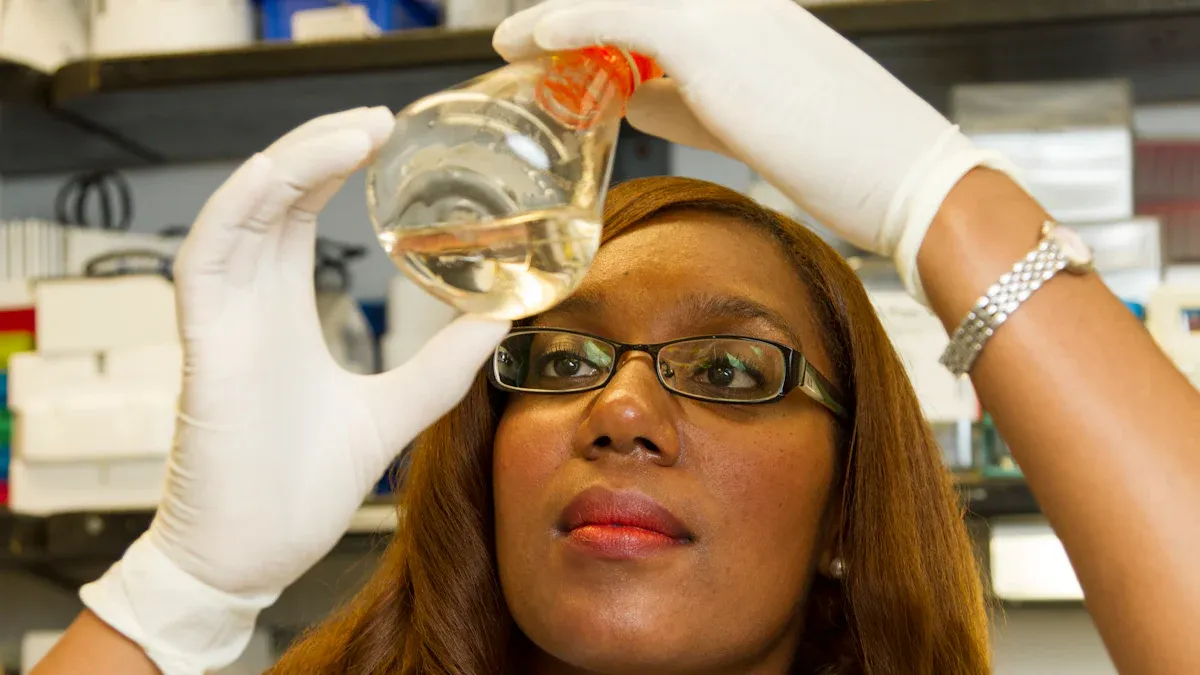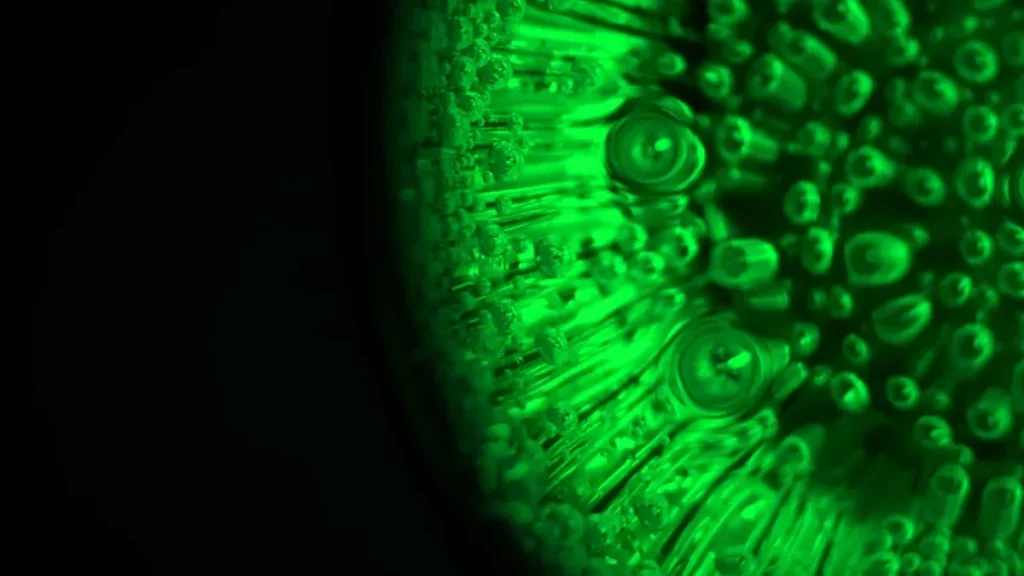News & Events
3 smart cell labeling tricks for better Western Blot results

You can achieve better western blot results by using three smart cell labeling tricks: fluorescent cell labeling, biotinylation techniques, and stable isotope labeling. These cell labeling methods help you detect even low-abundance proteins, give you a stronger signal, and make your western blotting more precise. Studies show that fluorescent detection in western blotting gives a broader linear range and less variability between dilutions, so you see clearer, more reliable signal differences. With these cell labeling tricks, you improve accuracy, sensitivity, and reproducibility every time you perform blotting.
Key Takeaways
- Fluorescent cell labeling enhances sensitivity, allowing detection of low-abundance proteins. This method provides a strong, stable signal and enables multiplexing for simultaneous detection of multiple proteins.
- Biotinylation techniques improve specificity by labeling surface proteins. This method helps reduce background noise and enhances signal clarity, making it easier to observe antibody-antigen interactions.
- Stable isotope labeling, like SILAC, allows for accurate comparison of protein levels between samples. This technique is ideal for quantitative studies, providing reproducible results across experiments.
- Optimizing antibody concentrations and using appropriate blocking reagents are crucial for reducing background noise and improving signal detection in Western Blotting.
- Choosing the right labeling technique depends on your experimental goals. Use fluorescent labeling for multiplexing, biotinylation for surface proteins, and stable isotope labeling for quantitative analysis.
Fluorescent Cell Labeling

Sensitivity Boost
You can increase the sensitivity of your western blot by using fluorescent cell labeling. This method lets you see even small amounts of protein because fluorescent dyes give a strong, stable signal. When you use fluorescently labeled antibodies, you get specific detection and can spot more than one protein at a time. This approach gives you a wider quantifiable range and better stability than traditional ECL detection.
Here is a table that shows how fluorescent detection compares to ECL detection:
| Comparison | Fluorescent Detection | ECL Detection |
|---|---|---|
| Flexibility for multiplexing | High | Low |
| Quantification | Improved | Standard |
You can also use blocking buffers like the TrueBlack® Fluorescent Western Blot Blocking Buffer Kit. This buffer increases specificity and sensitivity by reducing background noise, so your target signal looks brighter. Modern digital imaging systems help you turn these signals into accurate, quantifiable data. You get a consistent signal across a wide range of protein concentrations, which makes your results more reliable.
Step-by-step guide for using fluorescent dyes or tags:
- Prepare your protein samples and run them on a gel.
- Transfer proteins to a membrane for blotting.
- Block the membrane with a buffer to prevent non-specific binding.
- Incubate the membrane with a primary antibody.
- Add a fluorescently labeled secondary antibody.
- Wash the membrane to remove excess antibody.
- Visualize the signal using a digital imaging system.
Multiplexing Tips
Fluorescent cell labeling makes multiplexing easy in western blotting. You can detect several proteins at once without stripping and reprobing the blot. Use primary antibodies from different species and pair them with secondary antibodies labeled with different fluorescent dyes, such as IRDye® or VRDye™. This strategy helps you identify multiple targets in a single experiment.
Tip: Combine your primary antibodies in a diluted solution and incubate them together. Make sure the antibodies do not have overlapping epitopes.
Studies show that this method gives high reproducibility. For example, signal reproducibility for STAT3 in triplicate samples had low variation, with RSDs as low as 2.6%. This means you can trust your results and compare protein levels across samples with confidence.
Biotinylation Techniques

Surface Protein Labeling
You can use biotinylation to label surface proteins for western blotting. This process attaches a biotin molecule to the antigen, usually at primary amines. You often use sulfo-NHS esters for this step. These reagents are water-soluble and react only with antigens on the outside of the cell. They do not cross the cell membrane, so you get high specificity for extracellular antigen labeling. This means you can study only the surface antigens without labeling anything inside the cell. You improve protein detection and make your western blot more accurate.
Steps for biotinylation in western blot:
- Add sulfo-NHS-biotin to your antigen sample.
- Incubate to allow the reaction with primary amines.
- Wash away excess reagent.
- Continue with blotting and detection methods.
Reducing Background
You want clear results in your western blot, so you must reduce background signal. Too much background can hide the antigen signal and make it hard to see the antibody-antigen interaction. You can optimize the amount of affinity resin you use. Using too many beads increases background noise. Titrate the beads to find the best balance for your antigen and substrate. Also, choose your blocking reagents carefully. Milk can add extra biotin, which may react with detection reagents and increase background. Try protein-free blocking buffers for better specificity.
| Recommendation | Details |
|---|---|
| Blocking | Use blocking to reduce background signal. Incubate with blocking buffer for 1 hour at room temperature. |
| Add SDS | Add 0.02–0.1% SDS to your diluent to minimize background. |
| Optimize Antibody Concentrations | Use dot-blotting to find the best primary and secondary antibody concentrations. |
You should also wash your membrane several times with buffer containing Tween-20. This step removes unbound antibodies and reduces non-specific substrate signal.
Antibodies and Detection
Antibodies play a key role in detection methods after biotinylation. You use a primary antibody to bind your antigen. Then, you add a biotinylated secondary antibody. This secondary binds to the primary antibody. Next, you use streptavidin or avidin conjugates to bind the biotin. This step amplifies the signal and helps you see even weak antigen bands.
Biotinylated antibody conjugates give strong and specific signal amplification. They use the tight binding between biotin and streptavidin to boost weak signals in western blot.
Sometimes, endogenous biotin in your sample can cause spurious bands. You can avoid this by pre-incubating your biotinylated secondary antibody with the streptavidin conjugate. This step blocks unwanted substrate interaction and ensures only your specific antibody-antigen interaction gives a signal. Always use proper controls to check for non-specific substrate bands.
You can improve specificity and reduce background by saturating the biotin-binding sites in your detection reagents. This step prevents the substrate from binding to endogenous biotin or other biotinylated antigens. You get a clear, specific signal for your antigen of interest.
Stable Isotope Labeling
Quantitative Western Blot
You can use stable isotope labeling, such as SILAC, to make your western blot results more quantitative. This method lets you compare protein levels between samples with high accuracy. You grow your cells in media that contains either light or heavy isotopes. The proteins in each sample take up these isotopes during growth. After you mix the samples, you run protein gel electrophoresis and perform blotting as usual. The labeled proteins show up as different bands on the western blot. You can use primary antibody and secondary antibody pairs to detect your proteins of interest.
In a study validating 12 candidates through western blotting, results confirmed data obtained from SILAC-based analysis, indicating that SILAC is a powerful tool for investigating protein expression levels. The study identified 25 TH-regulated plasma proteins, with many being confirmed through western blotting.
You can see clear differences in protein levels. For example, researchers compared over 440 proteins in prostate cancer cells. They found significant changes in protein levels, and western blotting confirmed these results. This shows that stable isotope labeling works well for protein analysis in cancer research.
| Sample Type | Expression Level (normalized) | Ratio to G93A Mutant SOD1 |
|---|---|---|
| WT SOD1 Transgenic Mouse | 1.89 | 1.89 |
| G93A Mutant SOD1 Transgenic Mouse | 1.00 | N/A |
Experimental Setup
You need to follow a few steps to set up stable isotope labeling for western blotting. First, prepare your cell cultures in media with light or heavy isotopes. Next, harvest the cells and extract the proteins. Run protein gel electrophoresis to separate the proteins. Transfer the proteins to a membrane for blotting. Use a primary antibody to bind your target protein. Add a secondary antibody for detection. Wash the membrane to remove unbound antibodies. Visualize the signal and compare the intensity between samples.
You may face some challenges during setup. The table below shows common problems and solutions:
| Challenge | Solution |
|---|---|
| Poor antibody specificity | Optimize antibody concentration, use appropriate blocking agents, validate antibodies. |
| High background noise | Optimize blocking conditions, improve washing steps, consider alternative detection methods. |
| Inconsistent results across replicates | Standardize experimental conditions, use internal loading controls, perform technical replicates. |
| Weak signal intensity | Optimize protein loading amounts, enhance detection sensitivity, employ signal amplification. |
| Presence of artifacts and nonspecific bands | Ensure proper sample preparation, validate experimental steps, use appropriate markers. |
| Problems with transfer efficiency | Optimize transfer conditions, verify transfer quality, consider alternative transfer methods. |
| Variability due to sample handling | Follow standardized protocols, use fresh samples, store samples properly. |
| Difficulty in quantification | Optimize detection range, utilize image analysis software, perform calibration experiments. |
Tip: Always use the same primary antibody and secondary antibody for each sample. This step helps you get consistent results in your western blot.
You can use this approach to get accurate, reproducible data from your protein gel electrophoresis and blotting experiments. Stable isotope labeling gives you a strong signal and helps you compare protein levels across different samples.
Western Blotting Comparison
Advantages
You can improve your western blot results by choosing the right cell labeling technique. Fluorescent cell labeling gives you strong signal intensity and allows you to detect multiple proteins at once. You get a broader linear range and less variability between samples. Biotinylation helps you target surface proteins with high specificity. You can amplify weak signals using streptavidin and biotin, which makes it easier to see low-abundance proteins. Stable isotope labeling lets you compare protein levels between samples with high accuracy. You can use this method for quantitative western blotting and get reproducible results.
Tip: Careful selection of primary antibody and secondary antibody pairs increases the accuracy of your signal detection in western blotting.
- You get high reproducibility when you optimize each step of the western blot process, including protein extraction, quantification, and blotting.
- Using antibodies with strong specificity reduces background and improves your immunoblotting results.
Limitations
Each cell labeling technique has its own challenges. You may see variability in labeling efficiency, especially with biotinylation. The solubility of biotin substrates can affect how well the reaction works. Sometimes, nonspecific binding occurs if you do not remove nonbiotinylated proteins completely. Streptavidin contamination can complicate your results during enrichment. Fluorescent cell labeling may require expensive imaging systems. Stable isotope labeling can be resource-intensive and may not discriminate between protein sources.
| Technique | Limitations |
|---|---|
| Fluorescent Labeling | Requires advanced imaging, may have sampling error |
| Biotinylation | Variability in labeling, nonspecific binding, streptavidin contamination |
| Stable Isotope Labeling | Resource intensive, may not distinguish protein sources |
You must optimize your primary antibody and secondary antibody concentrations to avoid sampling errors. General protein labeling does not always tell you the source of the protein, which can lead to misinterpretation.
Best Use Cases
You should use fluorescent cell labeling when you need to detect multiple proteins in one western blot. This method works well for experiments that require high sensitivity and multiplexing. Biotinylation is best for studying surface proteins. For example, the RinID method uses genetically encoded photocatalytic protein labeling to optimize probe concentration and illumination time. You can achieve strong biotinylation signals with careful setup. Stable isotope labeling is ideal for quantitative western blotting. You can compare protein levels across different samples with high reproducibility.
- Use fluorescent cell labeling for multiplex detection and strong signal.
- Choose biotinylation for surface protein analysis and signal amplification.
- Apply stable isotope labeling for quantitative studies and reproducible results.
You can select the best approach by considering your experiment’s goals, the type of antibodies you have, and the signal detection method you prefer. Always optimize your primary antibody and secondary antibody steps to get the most accurate results in western blotting.
You can boost your western blot results by using fluorescent cell labeling, biotinylation, and stable isotope labeling. These tricks help you get a stronger signal and make your blotting more accurate. You see clearer bands and better data every time you use these methods in your western blotting workflow. For more tips on blotting, check out these helpful resources:
| Resource | Access Link |
|---|---|
| How To Optimize Your Western Blot | Visit |
| Learning Portal | Visit |
FAQ
What is the main benefit of fluorescent cell labeling in western blotting?
You get higher sensitivity and can detect multiple proteins at once. Fluorescent dyes give you a strong, stable signal. This method helps you see even low-abundance proteins clearly.
How do you reduce background noise when using biotinylation?
You should use protein-free blocking buffers and optimize the amount of beads. Washing the membrane with buffer containing Tween-20 also helps. These steps lower background and make your results clearer.
Can you use stable isotope labeling for all cell types?
You can use stable isotope labeling for most cultured cells. Some primary cells or tissues may not grow well in labeled media. Always check if your cell type can handle the labeling process.
What should you do if you see weak signals on your western blot?
Try increasing the amount of protein loaded or use signal amplification methods. You can also optimize antibody concentrations. Make sure your detection system is working properly.
Why is multiplexing important in western blotting?
Multiplexing lets you detect several proteins in one experiment. You save time and sample. You also get more data from each blot, which improves your experiment’s efficiency.

